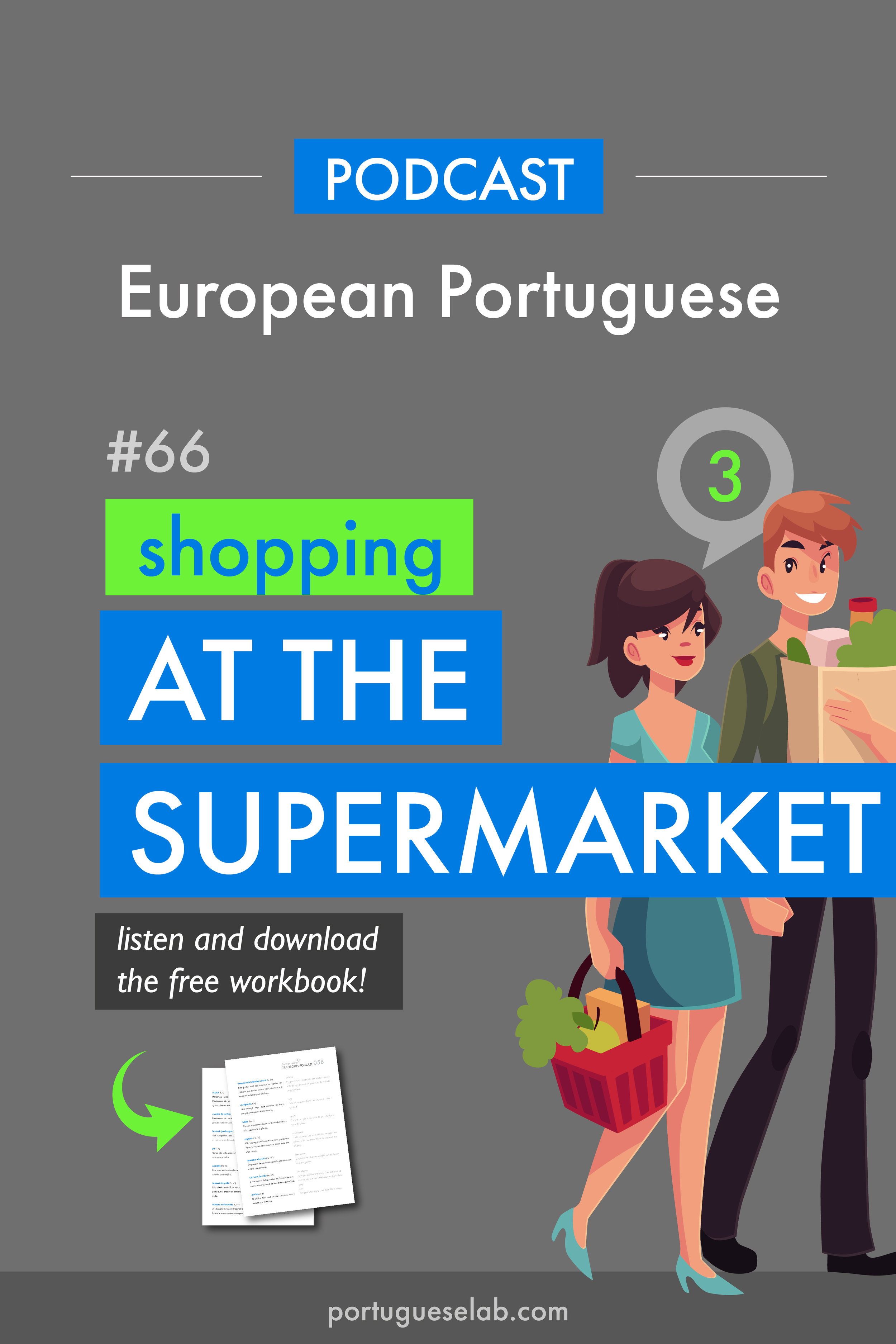Topic: Useful phrases to use while shopping for clothes
Olá everybody!
This beginners episode is an action formula and we will learn how to use the vocabulary of the previous episode at the clothing store!
In this episode you learn:
How to say what you are looking for.
How to characterize the item (size, colour, material).
How to say you want to try it.
How to describe how the item looks on you.
How to express likes and dislikes.
How to exchange your item at the store.
Listen to the episode
Notes
You arrive at the clothing store. You wish to buy a t-shirt. You enter and start looking around. The salesperson approaches you and asks if you need help:
Bom dia, posso ajudá-lo?
Good morning, may I help you?
As always, you reply with the same greeting, according to the time of day.
Bom dia! / Boa tarde! / Boa noite!
Eu queria uma t-shirt.
I would like a t-shirt.
T-shirt is a feminine noun, so you identify it here with the feminine indefinite article uma. If you were looking for a belt, a masculine noun, you would need the masculine indefinite article, um.
Either the salesperson shows you where the t-shirts are or you will be asked a series of questions to determine size and color of the item you want. Let's go back to our dialogue.
De que cor?
Which color?
Remember that your answer, using an adjective, like a color, needs to agree in gender and number with the noun it describes. In this case you want a yellow t-shirt. Generally the feminine ending will be the letter -a, and the masculine the ending -o. To transform a noun or an adjective to the plural form, the ending will generally be -s. For example:
t-shirts brancas white t-shirts
cintos brancos white belts
Your answer to this question could then be:
Eu queria uma t-shirt amarela.
I would like a yellow t-shirt.
Or a simpler version:
Amarela.
Yellow.
The next question could be:
De que tamanho?
Which size?
You either answer with the size number or you can just use the letters:
S for small
M for medium
L for large
Eu queria uma tshirt em tamanho S.
Eu queria uma t-shirt em tamanho M.
Eu queria uma t-shirt em tamanho L.
Eu queria uma t-shirt em tamanho XL.
One final question:
De que material?
Which material?
Simply answer with the nouns you learned in the previous episode. For example:
Algodão.
Cotton.
The salesperson brings you some options, and you really like one of them. You would like to try it to see if you like it on you. You point to the one you want and say:
Queria experimentar esta, por favor.
I would like to try this one, please.
Watch the video
Esta is a pronoun in place of the noun t-shirt. As you know, this noun is feminine, so this pronoun will also be feminine. If you would like to try this belt here, being belt, cinto, a masculine noun, you would say: este.
Eu queria experimentar este, por favor.
The salesperson will then respond with something like:
Claro!
Sure!
Pode experimentar ali!
You can try it over there (pointing at the fitting room).
If the fitting room would be here, instead of there, you would hear aqui.
Pode experimentar aqui!
You try it out. And this is how you can describe it:
Está grande.
It's big.
Está pequena.
It's small.
Está comprida.
It's long.
Está curta.
It's short.
This will work with all adjectives, and remember to transform the ending according to the gender of the item you are referring to.
If you just want to say how it looks in general, the structure is a bit different:
Fica bem.
It looks good (it suits).
Fica mal.
It looks bad (it doesn't suit).
You can also express that you like it:
Gosto!
I like it!
Or if you don't like it:
Não gosto.
I don’t like it.
You tried the t-shirt and you really like it. You want to ask for the price.
Quanto custa?
How much does it cost?
Custa 15 euros e 50 cêntimos.
It costs 15 euros and 50 cents.
You decide you are going to take it.
Vou levar.
I am going to take it.
This structure [to go + the infinitive of the main verb] expresses and event that will happen in the future. In this case it refers to a plan in the near future. This is the structure you use informally to speak about the future, otherwise you conjugate the main verb in the future tense (check episode 16 for more information on how to use the future tense).
If you didn't like the t-shirt after you tried it, then just use the same sentence in the negative:
Não vou levar.
I am not going to take it.
But you do like it and you are going to pay for it. You ask where you can pay.
Onde é a caixa?
Where is the register?
Most likely the salesperson will point at it saying:
ali: over there / aqui: over here
Great, just pay for your new t-shirt and you are free to go.
Now imagine you went home, washed it and it shrank so much your cat could wear it.
You go back to the store with your t-shirt and your receipt and say:
Queria trocar esta t-shirt, por favor.
I would like to exchange this t-shirt, please.
Aqui está o recibo.
Here is the receipt.
Congratulations, you did it!



